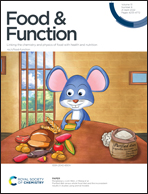Temporal changes in salivary composition induced by oral exposure to different wine matrices and the relationship with the behaviour of aroma compounds in the mouth
Abstract
The dynamic changes in saliva flow and composition (pH, total protein capacity (TPC), total polyphenol index (TPI) and saliva antioxidant activity (SAOX)) after the exposure of the oral cavity to aromatized wine matrices with different chemical compositions (dealcoholized, alcoholized, and synthetic wines) have been investigated. For this, stimulated saliva from ten volunteers were collected five days per week (from Monday to Friday) during three non-consecutive weeks, before (basal saliva) and after the oral intervention with the wines (5 and 15 minutes later) (n = 450). In order to know the relationship between the changes induced in salivary composition and the amount of aroma retained in the oral cavity, the expectorated wines were also collected (n = 150). Results showed differences in saliva composition (pH, TPI and SAOX) depending on the wine matrix that were only significant in the first five minutes after the oral exposure to the wines. The wines with ethanol produced significantly lower in-mouth aroma retention, while salivary TPI and, to a minor extent, SAOX, were positively related to the aroma retained. These results prove that not only wine aroma composition, but also the physiological changes in saliva induced by the non-volatile chemical composition of the wine play an important role in wine odorant compounds, and likely, in aroma perception.



 Please wait while we load your content...
Please wait while we load your content...